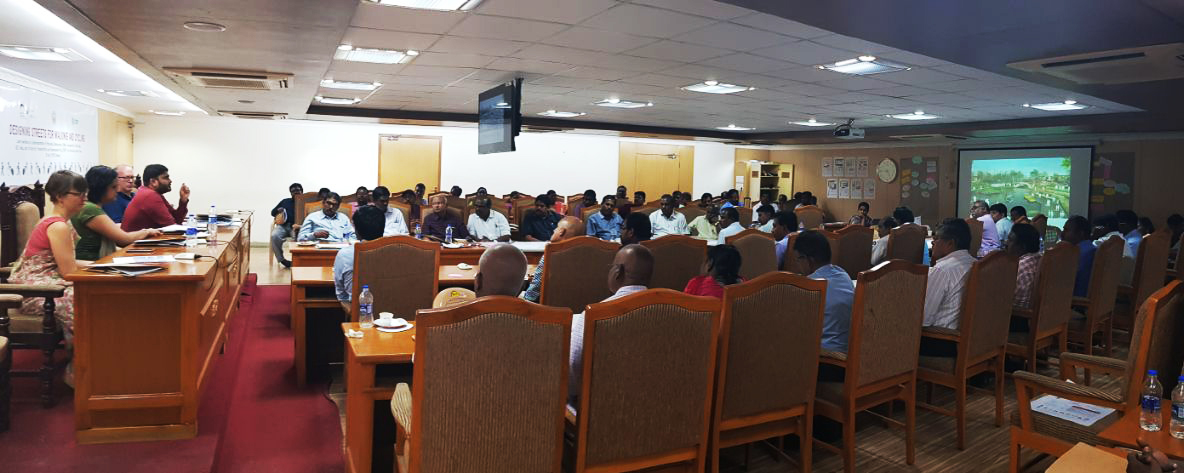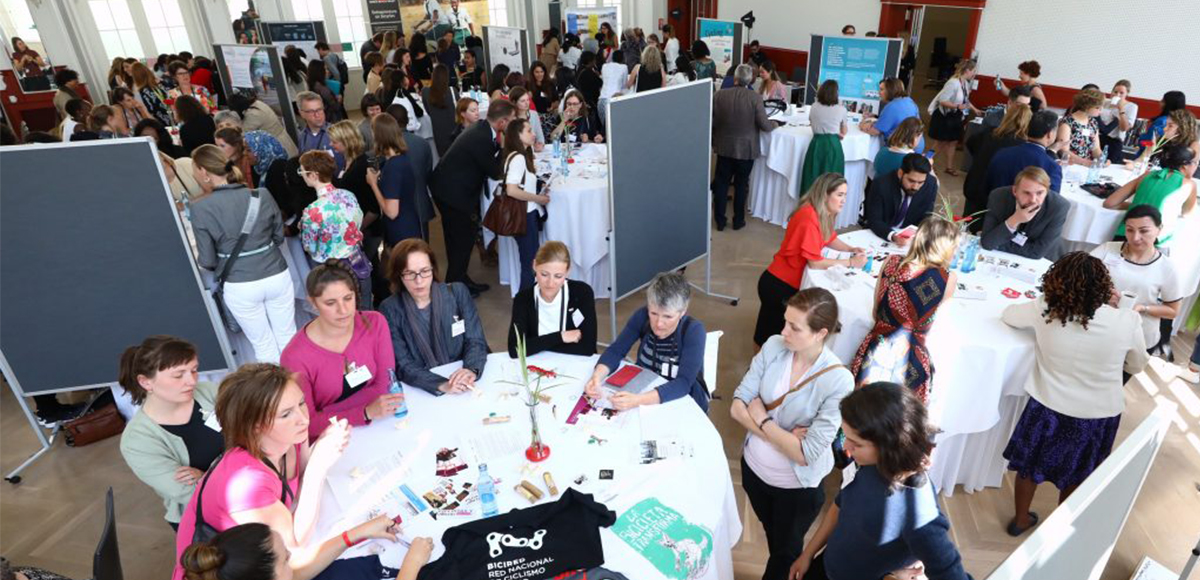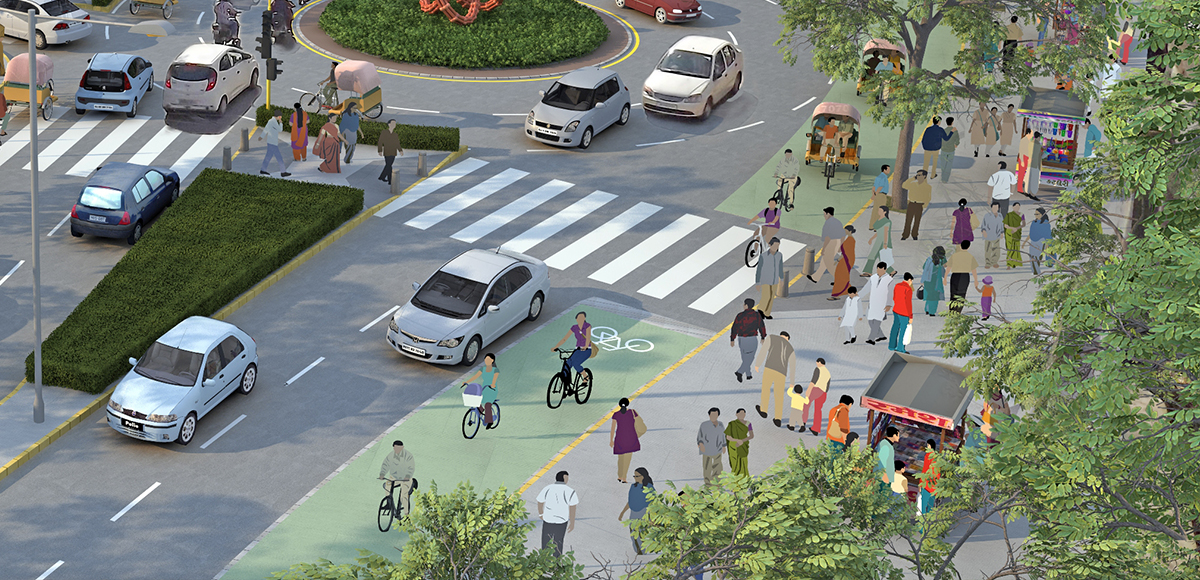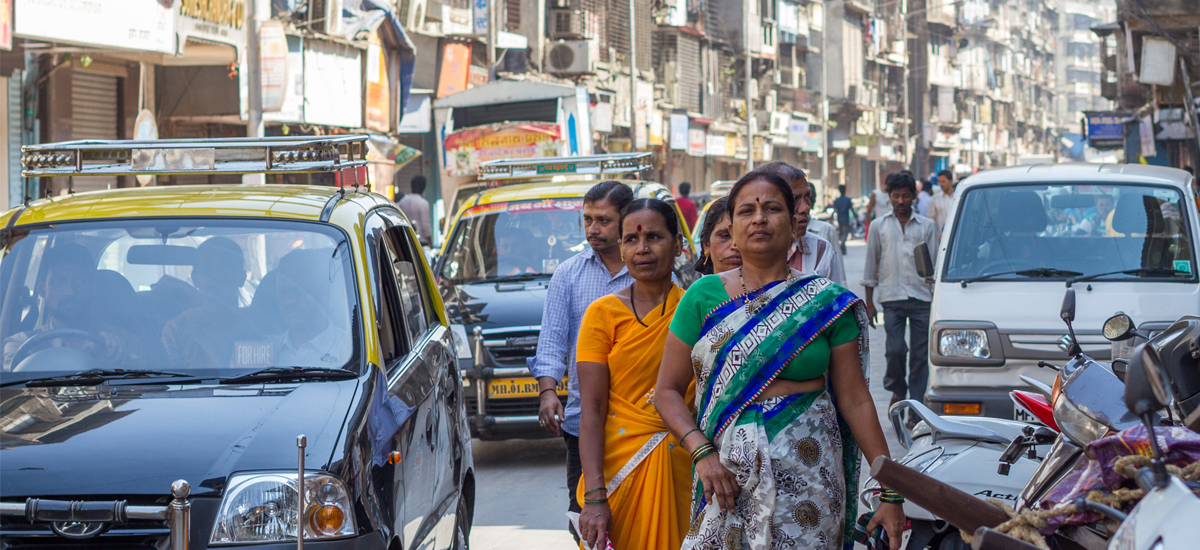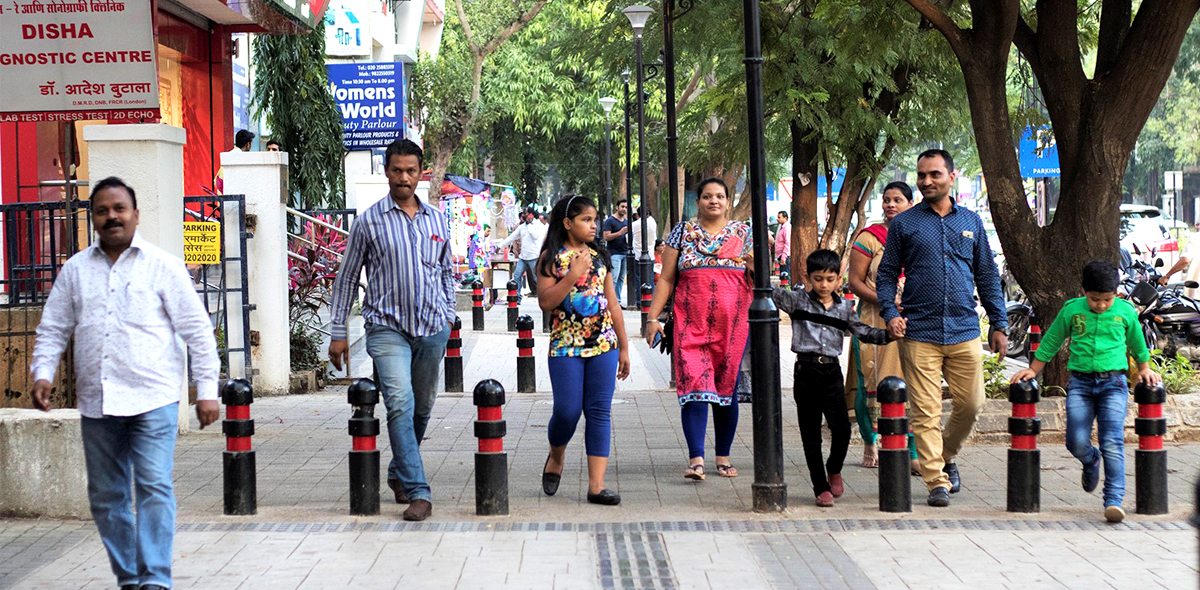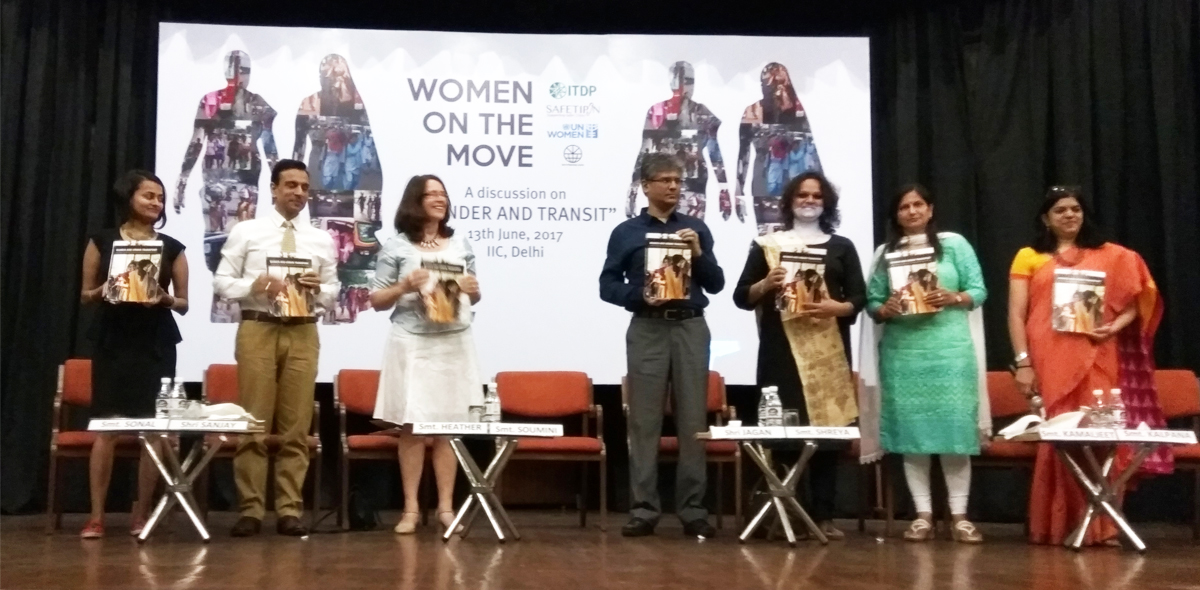Tamil Nadu is at the cusp of turning into the most urbanised State in India. With over 48 percent of its population living in urban areas, the cities of Tamil Nadu recognise the need to provide a clean, green, and healthy way of moving it’s citizens—walking and cycling.
To set the wheel in motion, ITDP India programme in collaboration with the Tamil Nadu Commissionerate of Municipal Administration (CMA) and GIZ Smart-SUT organised a day long workshop on ‘Designing streets for walking and cycling’.

The dearth of pedestrian and cycling infrastructure undermines our basic civil right. But, undeniably people of Tamil Nadu rely heavily on commute by foot; more than a third of all trips are made on foot!
Cities of Tamil Nadu now have a second chance at reclaiming space for its primary users—pedestrians and cyclists. The workshop paved way for the Transforming Tamil Nadu: Creating walking and cycling-friendly cities programme that aims to transform urban cores to liveable, safe cities.

The Programme brings together 10 Tamil Nadu cities — Coimbatore, Madurai, Salem, Thanjavur, Vellore, Tiruppur, Tirunelveli, Tiruchirappalli, Thoothukudi and Erode — selected under the National Smart Cities Mission. These cities have been allocated approximately 2500 crores towards the transformation of 500 km of streets, in total.

The 10 cities will be assisted by ITDP India programme, over a nine month period, to identify, plan, and implement city-wide walking and cycling networks. Of these 10 cities, three will be identified and assisted in creating detailed network plans by ITDP India programmed in collaboration with GIZ Smart-SUT. These network plans aim to boost economy, promote healthy living, and reduce the environmental impacts of our transport choices. In a nation where cars are a status symbol, it is commendable for these cities to envision an increase in the use of cycles and the ease of walking.

The Programme, that is now commissioned by the CMA is attributed to the efforts of sensitising and inspiring city officials over the last two years. Coimbatore, with support from ITDP India programme, kick-started the sustrans crusade by evangelising the Greenways and Lake Restoration Project, which includes a 30 km network of exclusive walking and cycling infrastructure connecting eight water bodies across the city. The city’s vision has had a bandwagon effect across the State.
The 10 cities have also been inspired by the seamless design and execution of Pune’s Complete Streets. ITDP India programme, with the support of the State Government, organised study tours for over 50 Commissioners, Engineers, and Project Management Consultants to explore Pune’s work on-ground that has set world-class street design standards in India.

TN delegates assessing the public bicycle sharing system on a site visit to Pune
As cities were already sensitised to embrace the walking and cycling paradigm shift, the participants—Commissioners, Engineers, and Project Management Consultants—were extremely receptive of catalysing change.
During the workshop, presentations by Shreya Gadepalli, South Asia Programme Lead (ITDP), and Aswathy Dilip, Senior Programme Manager (ITDP India programme) struck a chord among participants to ensure that our cities put people before cars. In effect, all citizens should be able to walk and cycle safely, and easily access jobs and services via quality public transit.

Shreya Gadepalli, South Asia Programme Lead (ITDP), presenting on sustainable urban transport
Jan Rickmeyer, Transport Policy Advisor for GIZ Eschborn, presented case studies from Leipzig to demonstrate how cities can transform into cycling utopias. Similarly, Juergen Baumann of C40 Cities Finance Facility, presented Bogota’s story of designing 25 km of cycle highway through low, middle, and high income neighbourhoods to ensure socially inclusivity.
At the workshop, peer-to-peer learning, through group exercises, was organised by ITDP India programme and GIZ to ensure that cities were equipped with the right skill-set to translate their learnings into implementation projects. Mapping existing transport opportunities and constraints of the city has helped determine the selection of streets that will be redesigned and transformed into walking and cycling networks.

Groups mapping existing transport constraints to identify potential walking and cycling networks
Transformation through design is the underlining key to success. In this regard, the Commissioner of Municipal Administration requested cities to adopt the model Request for Proposal (RFP): Appointment of a Technical Consultant for Planning, Re-designing and Monitoring of Smart Roads Development, prepared with the support from ITDP India programme, to appoint qualified designers to execute these network plans.

The Transforming Tamil Nadu: Creating walking and cycling-friendly cities programme that is now set in motion owing to the success of this workshop, will see through 10 smart cities wherein walking and cycling will form the backbone of their transport system. ITDP South India team will collaborate with these cities to make their dream a reality.
Walking is a basic human instinct, and cycling is a healthy and sustainable choice. They are unparalleled forms of transport. With clear vision and direction from the State, the cities of Tamil Nadu are on a resolute path to embrace a future where cities are designed to be enjoyed on foot or by pedal.
Watch this space as we embark on a journey to assist 10 cities of Tamil Nadu transform into people-oriented cities.




